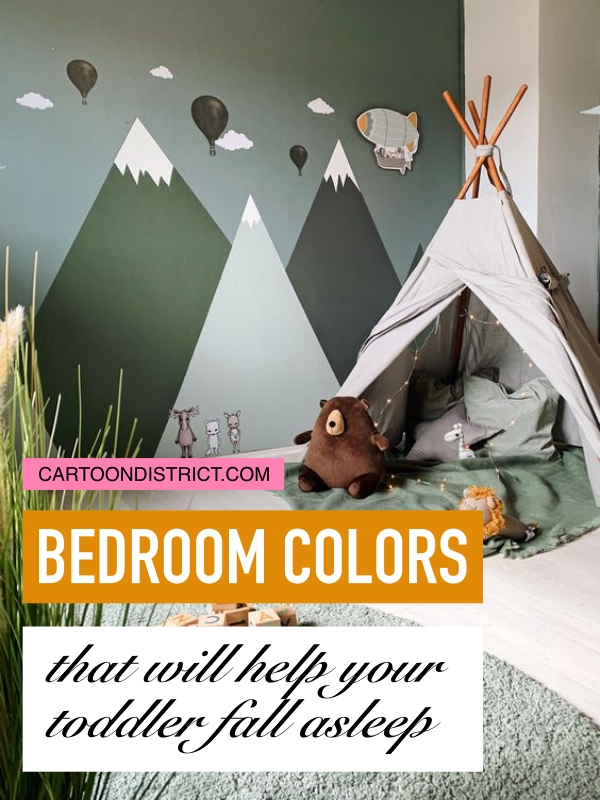Is it really possible for design to affect mood, so much so that an active toddler can feel so relaxed that they quickly fall asleep when you put them to bed? Most toddlers aged one to two actually sleep between 10 and 14 hours a day though some can ‘regress’ to erratic sleep at the age of around 18 months. Patience, good sleep hygiene, and optimal bedroom design can all help keep interruptions to a minimum. Follow the tips below to give your toddler a good start sleep-wise.

Cool Colors Rule
Research published in the International Journal of Pediatrics has shown that color has the ability to excite, agitate, inspire, or calm—and that this is particularly true for children.

The researchers recommended soothing pastel shades, particularly blue, indigo, and violet, which are considered ‘cool colors’. Avoid red, yellow, and orange, which are considered ‘magnetic’ and ‘warm’. These energize and lift the mood but are not ideal for sleepiness. Green lies in the middle of the spectrum because it is neither cool nor warm. It is still a good choice, however, because it creates balance. “We often retreat to the green of nature when we need space, calm, and a sense of peace.” Green helps create balance, which is a great state to be in before hitting the sack.
Soft Layers of Color

Contrast creates equilibrium in a room but too many clashing and loud prints can be over-stimulating and stressful. Some nursery looks are fairly neutral monochromatic for this reason, with walls, curtains, and cribs or beds bearing similar cool hues, complemented by a touch of warmth in elements such as the flooring, door frames, and soft furnishings (as it is important to create balance). If your toddler is changing their crib for a bed and you want to paint the latter, choose a non-toxic paint that is free of VOCs. You may also have to make additional changes at this stage, ensuring all furniture is anchored and installing window guards. If you have blinds, now is a perfect time to change them for curtains in a similar tone as the rest of your child’s room.
Choosing What Your Child Likes

One rule that should override all others is the personal preference of your child. As reminded by the researchers, psychological reactions are deeply personal. You may feel one way about a bright color like red, for instance, but your toddler may love it. If so, you can use this color in touches such as cushions, decorative pieces, and the like. You can also opt for pastel versions of their more vivid color choices.
To create a bedroom your child will easily fall asleep in, choosing the right color scheme can be a big help. Research indicates that cool colors are the way to go, as is the middle-of-the-spectrum hue, green. Let your toddler’s choices influence your decisions. Even if they love energizing tones, you can find ways of incorporating them that do not involve too many clashes and contrasts.
